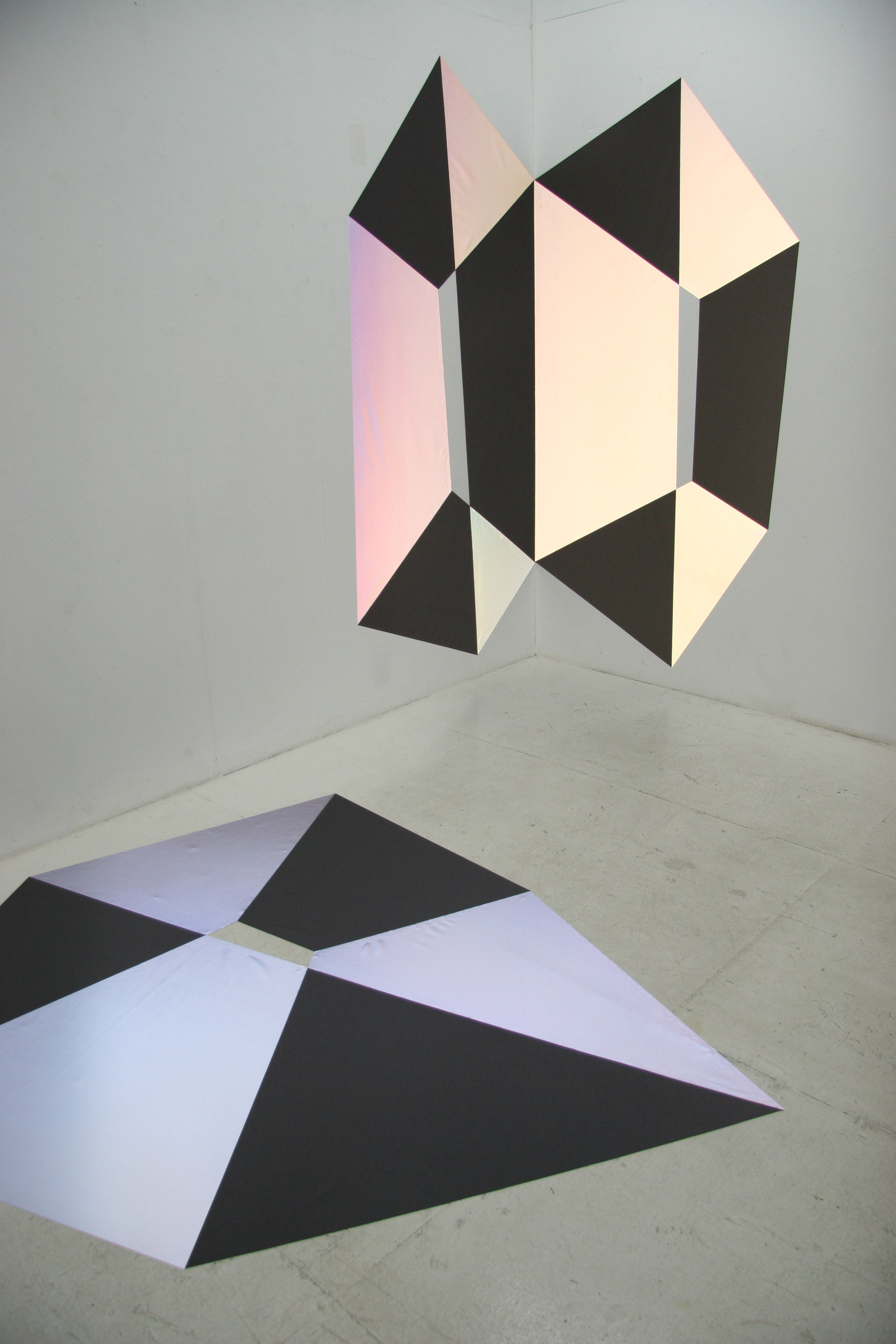Intangible Spaces
Aisho Miura Arts, Tokyo, 2010
In the interrelated art installations I created for this exhibition I wished to capture something of the essence of Tokyo as a city. Initially, for the projection onto the wall construction the intention had been to have a live feed of the view visible from the outside of the gallery wall, rendering the surface of the building seemingly transparent. For technical reasons this was not possible on this occasion so I used recorded video sequences for the projection combining two views of scenes observed in the city at the time of the show. I contrasted video sequences of Tokyo panoramas viewed by day from the top of a high building, enabling the complexity of the urban landscape to be viewed from an unusual perspective, and summer firework displays, momentary bursts of structured light seen at night.
The floor piece incorporated a real-time video projection of the view as if seen directly through the floor to the room below, with the video camera located at an equivalent angle to the projector capturing the view in real time. This gave the viewer the impression they were seeing through the floor to the activity in the space below when viewed through the RPT (Retro-reflective Projection Technology) projector.
In creating these artworks it was my intention to play with pictorial convention in the way they were located in space, utilizing the corner of the room and floor, locations not usually associated with the display of pictorial images. I also wished to explore further how a dynamic relationship between image and the architecture within which it is located can create the illusion of its projection into the real world space of the viewer, and the corner construction offered another means to achieve this (see also Identity 2009 Wall Installation and Interactive Wall Construction 2008).
Both the floor and wall based RPT artworks required interaction on the part of the viewer to fully observe their pictorial potential. The wall and floor pieces could be viewed as forms in their own right that interacted with the architecture of the gallery space to create the illusion of three dimensional structures. When viewed through the RPT projectors an alternative reading of the space within the artworks was enabled.
This often resulted in viewers spending some time walking up to the artworks themselves, then back to viewing them through the projectors, changing their view to look again without projection, and so on.
We are familiar with looking into an imaginary space, and developments in immersive technologies have sought to place the viewer in ever closer proximity to the action. A third artwork displayed in this installation developed this idea by locating an image of the viewer within the space of the artwork itself.
installation
The artwork was constructed from irregularly shaped alternating lighter and darker grey RPT material panels. Located at the corner of two walls the wall installation appeared three dimensional and as if projecting into the viewer’s space, onto which the looped video sequence was continuously projected.
My design for the artwork was in part determined following initial discussions relating to the technical aspects of the RPT projectors and my inclusion of real-time video in the process, which involved working closely with the Tachi Lab team.
Then the hardware, including 2 RPT projectors, video cameras, computers and cabling were installed. The final stage involved calibrating the equipment and preparing the video sequences I had shot earlier for the wall projection.
RPT offers the potential for inventing with projection techniques on an architectural scale and my intention was for the distinctions between illusion and the reality of the viewer’s space to become blurred, with the artwork appearing to be located in the real space of the viewer.
The first practical stage for installing the artwork involved identifying the optimal projection locations within the gallery space, cutting the RPT material according to the designs and installing them on the floor and walls to allow for the projections to take place.
As the visitor climbed the stairs to the art installation their progress was being recorded by a small video camera. Their image was simultaneously isolated from the background and combined with a video sequence I had made of the wall installation. The visitor could then view this as they reached the top of the stairs, seeing themselves apparently ‘climbing into’ and located within the artwork they are about to experience.
























